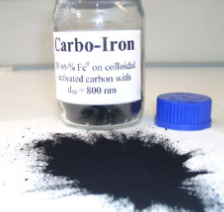 >
Spotlight October 2022: The titanium dioxide debate – why the current ECHA and EFSA hazard classification should be questioned
>
Spotlight October 2022: The titanium dioxide debate – why the current ECHA and EFSA hazard classification should be questioned
Due to various reports and scientific studies, titanium dioxide (TiO2)was also banned in Europe this year (2022) for use as a food additive with the indication that it could possibly be carcinogenic to humans. Although no case of tumour induction in humans has been reported since the use of this material in micro but also nano size in many products (included in paints as a white pigment for more than 80 years and permitted in foodstuffs in Europe since 2008) the European Chemicals Agency (ECHA) and the European Food Safety Authority (EFSA) have concluded that the evidence would be sufficient to apply a new classification.
However, the British Committee on Mutagenicity of Chemicals in Food, Consumer Products and the Environment (COC) and Health Canada disagree and continue to classify TiO2 as harmless because they consider the evidence from the submitted reports to be inconclusive and inapplicable.
The two here presented recent publications now comment on this new classification in Europe and come to the conclusion that this classification must be reconsidered, as there is no evidence for such a direct genotoxic effect of TiO2 in consumer products, would thus follow the British and Canadian example. The example of TiO2 makes it clear how important it is in the future to carry out toxicological tests exactly according to protocol and thus produce high-quality and comprehensible “FAIR” results (cf. Spotlights September 2022 and August 2021).
Original publications:
- Driscoll, K.E. (2022). Review of Lung Particle Overload, Rat Lung Cancer, and the Conclusions of the Edinburgh Expert Panel-It’s Time to Revisit Cancer Hazard Classifications for Titanium Dioxide and Carbon Black. Front Public Health 10, 907318
- Kirkland, D., Aardema, M.J., Battersby, R.V., Beevers, C., Burnett, K., Burzlaff, A., Czich, A., Donner, E. M., Fowler, P., Johnston, H.J., Krug, H.F., Pfuhler, S., Stankowski, L.F. (2022). A weight of evidence review of the genotoxicity of titanium dioxide (TiO₂). Regulatory Toxicology and Pharmacology, in press, journal pre-proof

Weitere Spotlights
Spotlight November 2021: Safe Materials from Scratch – Safe-by-Design in Materials Research
Advances in the field of materials science continue to amaze us with nanoscale materials with extraordinary chemical, electrical, optical, and numerous other properties. However, some nanoscale materials have different toxicological profiles compared to the same bulk material. Since safety issues are usually addressed just before launching a product into the market, safety issues may be […]
Read moreSpotlight March 2022: Safe Materials from Scratch – Safe-by-Design-Concept in action
In recent decades, German research on nanomaterials and new, innovative materials has been widely expanded by material safety aspects. European initiatives also pay significant attention to this: both the European Union (EU) Green Deal, and the Chemicals Strategy for Sustainability (CSS) aim to create a sustainable, climate-neutral economy with sustainable and safe chemicals and products, […]
Read moreSpotlight September 2020: Groundwater remediation with Carbo-Iron® – Risk or Benefit?
In September we would like to present a paper of the BMBF project Fe-Nanosit. The project dealt with the use of iron-containing nanomaterials in groundwater and wastewater remediation. A comprehensive assessment and weighing of benefits and possible environmental risks resulting from the application is now presented by the project partners in this paper. Groundwater is indispensable for the […]
Read moreSpotlight August 2023: From principles to reality. FAIR implementation in the nanosafety community
In the August 2023 Spotlight, we present a paper that addresses the implementation of FAIR (Findability, Accessibility, Interoperability and Reusability) Data in nanosafety research. The authors introduce the new AdvancedNano GO FAIR Implementation Network (see also https://www.go-fair.org/implementation-networks/overview/advancednano/) established as part of the GO FAIR initiative. The paper highlights the AdvancedNano GO FAIR Implementation Network’s support […]
Read more

